Iranian's Customs and Traditions - Fun to Know or Essential?
Each society has cultures and traditions that identify its heritage and make it uniquely different.
But some people, especially those new to a foreign country, can be left perplexed. Cultural traditions are practices and beliefs that are learned since birth. They reflect the way of life in people.
A country's culture is more than just how its people practice their traditions—it's a whole way of life, norms, communication, and values that shape how society is formed. Hence, a person seeking to travel to another country must have ample knowledge about its culture and language to understand its people well.
If you plan to visit Iran, You've probably heard that Iran is considered one of the cradles of civilization. Its culture is one of the world's oldest, most unique, and longest-lasting civilizations. Due to Iran's dominant geo-political position and rich history, it has significantly impacted the world through art, architecture, poetry, and science.
In this article, we will mention some Iranian cultures that are as routine as drinking water for Iranians but can leave others needing clarification. Iran has plenty of Cultures and Traditions which can be new and attractive to tourists and culture lovers.
Except for the religious cultures and ceremonies, most Iranian cultures belong to pre-Islamic Iran and Zoroastrianism.
Read on to discover some cultural customs only Iranians will understand.
Burning Espand

Iranians can be a bit superstitious sometimes, especially when it comes to being jinxed. So when they feel as if they have already been jinxed or to avoid being jinxed or fight against the jinx, they burn wild rue seeds called "Espand" until they start to crackle to prevent it. Espand seed is a dried seed of Peganum harmala, a perennial herb shrub from the Caltrop or Zygophyllaceae.
They usually wave the smoke of the burning Espand over themselves and the heads of their loved ones while sending three salavât.
In Iran, you will even see people waving around Espand on the street. That is because Iranians believe Espand to have purification properties; they also burn it in their homes from time to time or any time they move into a new house. It is common to catch a whiff of these pleasant-smelling seeds from under your neighbor's door.
| Suggestion: Fun Things to Do in Iran | A Fun Guide!
Beshkan
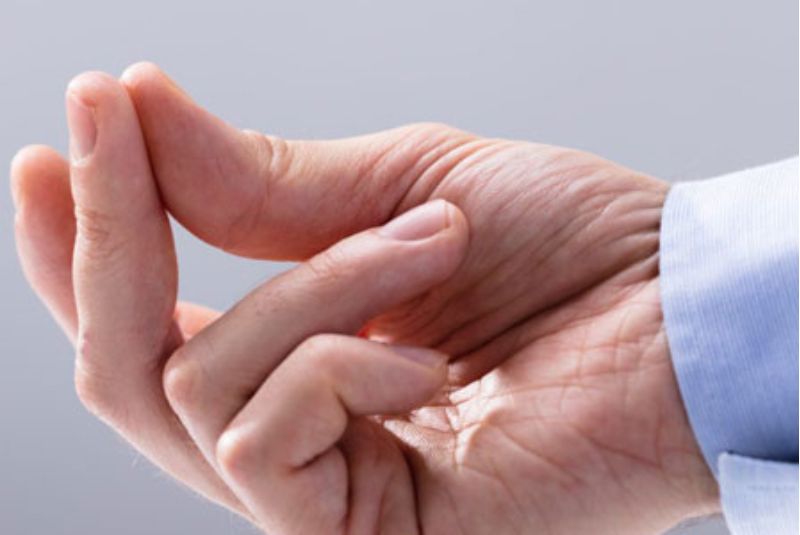
This is common in Persian weddings or parties. When you go to a Persian wedding or party, you will witness the peculiar way Iranians snap. Instead of using the thumb and middle finger together to snap, they do it in a way it makes more sound. They intertwine both hands to create a loud snap with their index fingers, making it fun and flashy.
| Read More: Iranian Folkloric Dance
Nazri

If you visit Iran during religious events like Ramadan or Tasua and Ashura events (the eve and the day of the martyrdom of Imam Hussein, respectively), you will witness this.
Nazri is a food offering distributed for free for religious merit. Iranians offer food (such as Ash, Sholeh Zard [saffron rice pudding], Gheymeh stew, etc.). Many Iranians believe that eating Nazri, even just a bite, will bless them.
During these religious ceremonies, you will also see istgâh-e salavâti, little cubicles that give out free water and tea. If you take some, you send a salavât to the prophet Muhammad (PBUH) in exchange.
Salavat is an Arabic phrase that means "Peace be upon Mohammad and his descendants."
| Discover: Sama Dance | A Spiritual Journey in Persian Culture
Kheyrât
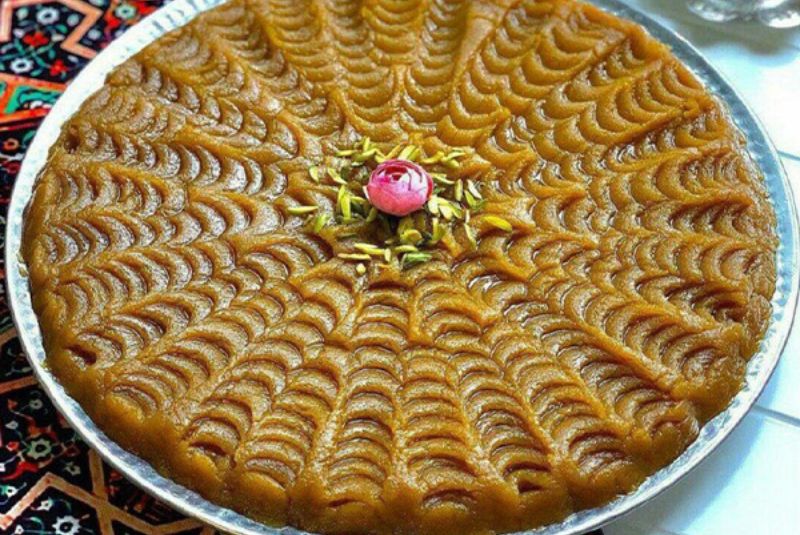
Kheyrat is piggybacking on the idea of Nazri above. Kheyrat is charitable deeds you do for the dead.
You may be walking down the street and find a free random box of chocolates, dates, or sweets in front of a store or public space in honor of loved ones who have passed away. This usually happens on Thursday evenings because that's an auspicious time to pray for the deceased or visit them at the graveyard. If you take one, you are supposed to say a prayer for the person.
| Also read: Things to Bring Back from Iran
Nooch

Iranians can't be bothered to say no. They will instead raise their eyebrows as if uttering that one-syllable word is too much effort.
You might even receive it with a nooch sound made by sucking the tongue. It could be less direct than giving an outright 'no', or it's just a convenient way to say no while munching on sunflower seeds and someone asks you a question.
| Suggestion: Best 5 Star Hotels In Iran to Stay in 2023 + Pics
Soor Dâdan

Iranians are always ready to join you in your celebration, especially if there's Shirini involved! And They are happy to share this joyful event with you, especially if you're treating!
You might be walking into an office one day to find a random box of Persian sweets. Although Iranians don't need a reason to enjoy some Persian sweets with tea in the company of friends, it's more likely that someone is giving soor, an offering of pastries (or a party), because they bought a house or a car or maybe they got engaged.
Sur dâdan is a party you throw to celebrate something valuable you've bought, like a car or house or another significant event like a graduation or landing your dream job.
Your Iranian friends might tell you, "Sur dâreh!" which means you have to throw a party so we can celebrate with you. It doesn't necessarily have to be a party. You could also get some sweets or treat for dinner.
| Read more: Can I Travel to Iran from USA?
Parents Calling Their Children "Mom and Dad"

It's one thing for children to call their parents mom and dad, but it's quite another for the parents to name their kids mom and dad. And yet, that's precisely what Iranians do, usually when greeting, asking a question, or for emphasis. A mother calls her child maman jân while a father says baba jân. But this curious way of expressing endearment doesn't stop there – it also extends to aunts and uncles.
| Read more: Can I Travel to Iran from UK?
Not Accepting Money (Ghâbel Nadâre)

The knee-jerk response to the question "How much is it?" is ghâbel nadâre (it's nothing/it's not worthy of you). Receiving money for your services is standard worldwide, but Iranians think it's not polite to name the price right off the bat and prefer to ease into it. In its most insincere form, the price is uttered in the same breath right after ghâbel nadâre, but, hey, at least they said it. This custom can often be just as annoying to locals as it is to tourists, but it's here to stay. Not accepting money is Iranian taarof.
Returning a Dish with a Gift Inside

This is a great tradition whereby if someone gives you food in a dish, it would be rude to bring back the dish empty, so instead, Iranians place a small gift inside as a thank you. And what you put inside depends on what you have in your kitchen. For example, if you baked a cake earlier that day, you could put a piece in the dish and return it or throw in some pistachios or chocolates. If you have nothing, you can even give them a couple of stems of flowers. There's no fixed rule. The idea is not to return an empty dish.
Celebrating Events on the Eve

As long as we're talking about Iranian traditions, it's essential to know that Iranians celebrate birthdays on the eve. Your surprise birthday party may be a surprise as it may not even be your birthday! But it's not because your friends still don't know your birthday after all this time. It's because Iranians celebrate birthdays and anniversaries on the eve. It's fantastic when you're a kid and want to be older, but turning a year older one day earlier is not nearly as thrilling as the years go by.
| Read More: Iranian Festivals and Celebrations
Sitting with Your Back to Someone

Never, under any circumstances, sit with your back to someone. And if you absolutely must, apologize. Even the person driving a car will apologize to the passengers in the back seat. The rear seat passengers will reassure them that it's ok, saying that a flower has no front or back.' At this point, the front seat passenger returns the compliment: a nightingale sits behind the flower.
To sum up, the front seat passenger is a flower, and the backseat passenger is a nightingale. No one is offended. It's all just a part of the insincere exchange of compliments and the complexities of taarof.
| Also might be interesting: Traditional Clothing of Iran: Exploring Iran's Rich Heritage
Târof
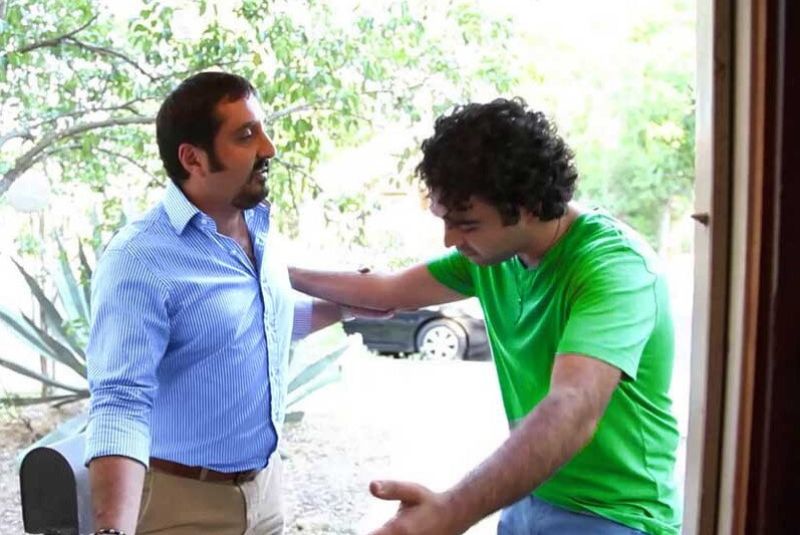
Taarof is the heart of Iranian social behavior and a hospitality trait among Iranians and is considered one of the main Iranian Cultures. It is a fake or insincere act in which a person does not reveal their true feelings.
Târof is extensive and intricate, but here are a few examples that others can't quite wrap their heads around. In Iran, when you are offered something, you are expected to politely decline at least three times before accepting because accepting immediately would be brazen. Similarly, you must also offer three times.
Also, after buying stuff from the shop, Iranians won't even accept payment the first time and insist on ghâbel nadâre, which means that you do not have to pay for the product or service because it is not worthy of you. This is the most insincere form of târof because the money is taken from you while simultaneously uttering these words.
Another form of Taarof is replying to the question 'How are you?' with 'I'll sacrifice myself for you.' because answering with a mere 'fine' is far too basic for the Iranian. This can be maddening for foreigners unaccustomed to it, but there is no escaping it in Iran.
Throwing Water Behind the Traveler
In Iran, when a family member is leaving for a long journey, going for military service, or moving to another city to study at a college or university. Iranian people prepare a tray with a glass of water (symbolizing pure flowing water) and the Quran. So the traveler must first kiss the Quran, pass under it three times, and then leave for their destination.
When the traveler is leaving the house, the remaining family members will toss the water from the glass behind them, a gesture symbolic of ensuring their safe return.
Hâji Firooz

This is very common in the weeks leading up to Nowruz. You will see the jovial character known as Hâji Firooz around the town, donning a red suit with his face covered in soot.
He also holds a Tambourine in his hand and parades around the streets, singing short songs with his bongo-playing sidekick to spread happiness and joy.
The reason for the black face is because it is believed that during the ancient times, Zoroastrian priests sent Hâji Firooz around this time to spread happiness and the word of Nowruz, and because he helped people burn their old belonging to make way for renewal, his face turned black from the smoke.
Haft Seen
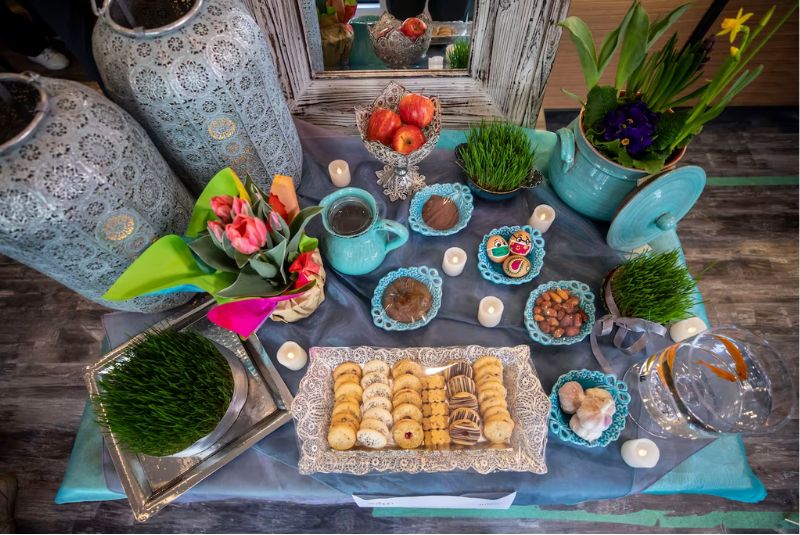
A few weeks before Nowruz, You will see Iranians preparing a table called haft seen, or 'seven S's.' The idea behind this is that seven plant-based items beginning with an s in Persian are placed on a table, each symbolizing beauty, love, health, affluence, wisdom, patience, and rebirth.
The most important plant item on the table is Sabzeh, greens sprouted from lentils and wheat. The greens are supposed to absorb the accumulated negative energy in the home. Painted eggs, candles, hyacinths, goldfish, sweets, and a book by Persian poet Hafez are also included in the display. Families and friends gather around this table during the final minutes leading to Nowruz to celebrate.
Did you know that Nowruz is the first new year in the history of the world?
Learn more about the Persians' ancient new year, Nowruz!
Sizdeh Bedar
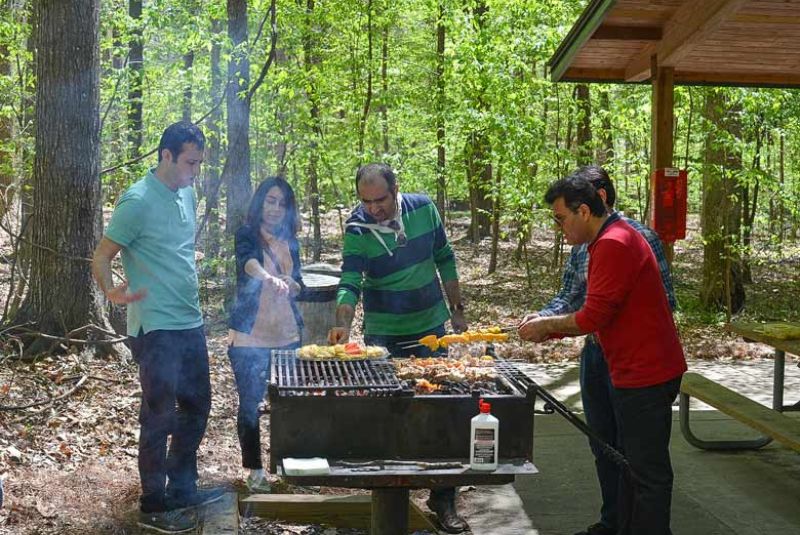
On the thirteenth day of the first Iranian month, Iranians go outdoors in Parks and public spaces with families playing badminton or throwing frisbees, barbecuing, making the traditional âsh soup, and drinking plenty of tea.
Couples will also knot the green sprouts from the haft sin table to solidify their unity; single girls also do it in hopes of finding a spouse by the following year. Sizdeh Bedar, also called Nature Day, is also a day when friends play practical jokes on each other, much like April Fools.
| Read More about Sizdeh Bedar!
Iranian Funeral Traditions
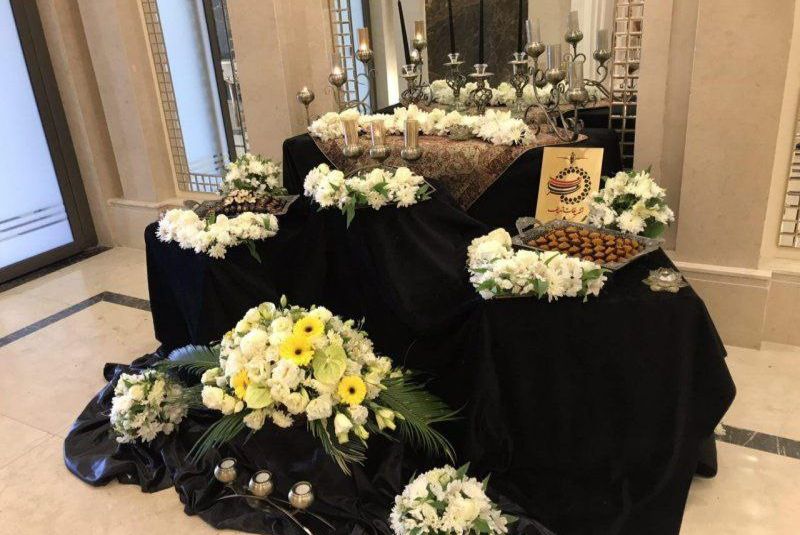
In Ancient Iran, when Zoroastrianism was the main religion practiced, they washed the deceased's body and put it in a big stone tower because they believed that burying the dead was disrespectful to the deceased and bad for the environment. After Islam, people bury the dead in graves. There are still some rituals when burying the dead for example, people gather together, go to the cemetery, and take flowers and fruits to the grave.
Chaharshanbe Soori (Charshambe Suri)

This is a popular annual tradition that stemmed from Zoroastrianism. It is celebrated on the last Wednesday of the solar year before Nowruz (the Persian New Year, which coincides with the spring equinox). On this night, Iranians gather, set off fireworks, and jump large bonfires to repel evil and make their dreams come true.
They also sing 'Your red color for me, my yellow color for you.' while jumping over the fire. These verses mean you should give the fire your sick yellow pallor and take the fire's warm energy. It is like taking the fire's heat and energy and giving all your negative energies and diseases to the fire.
Iranians believe all the bad vibes and diseases go away by burning the bushes, and it can be a good beginning for the new year. You will also see paper lanterns lit and released into the sky, which suggests they are carrying the hopes and wishes of Iranians.
"Suggestion"
Learn Everything about "Chaharshanbe Suri: The Festival of Fire and Renewal in Iran"
Kuzeh Shekani (Breaking the Pottery Pitcher)
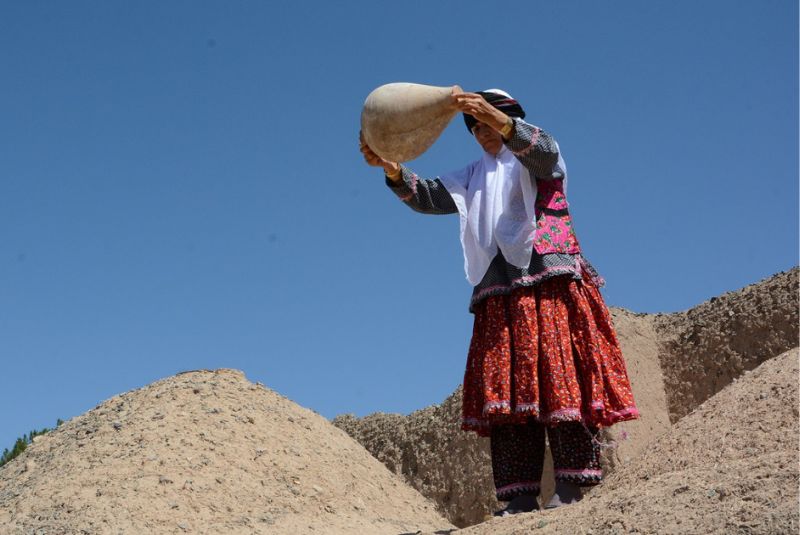
After setting the fire on Chaharshanbeh Suri, Iranians put the ashes of the fire in a pot as a symbol of misfortune, a coin as a symbol of poverty, and salt as a symbol of the evil eye in a pottery pitcher. Then every family member rotates the pottery pitcher around their head, and the last person takes it to the rooftop and throws it into the alley, meaning that all the misfortune, evil eyes, and poverty go away.
| Learn more: Tirgan Festival; Water Festival in Iran from Ancient Times
Ghashogh Zani (Stirring the Spoons)

It is common to see young people take a spoon and a copper bowl with them during the Nowruz celebration, and they go to the streets at night. They go in front of seven houses and stir the spoon in the bowl. The house owner is supposed to bring them some chocolate, sweets, nuts, or money. Sometimes they wear funny customs or cover themselves with Chador in order not to be recognized.
Eavesdropping
Young girls who like to marry sooner head to alleys on the last Tuesday night of the year and eavesdrop. They believe that their wishes will come true if they hear good stuff. If they hear bad things, their wishes may not come true.
Nowruz
The Iranian New Year, called Nowruz, is among the prominent Iranian cultures with so many great and fascinating rituals.
It originated from Zoroastrianism. The Persian New Year is celebrated at the beginning of the tropical year (March 20th or 21st -depending on the year-). Before Nowruz, Iranians clean their homes and buy new dresses. They also go to visit their families in Nowruz.
Yalda Night (Shabe Yalda) | (Shab Chelle)
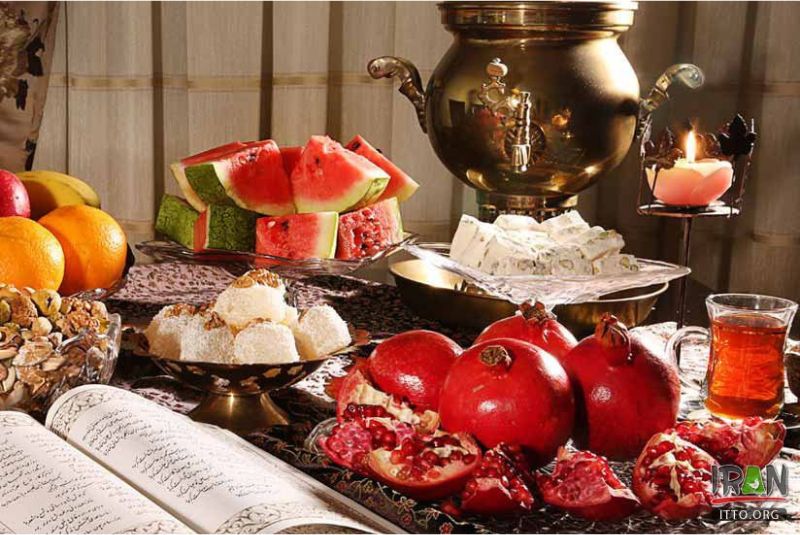
Yalda Night is also Rooted in Zoroastrianism. It is the longest night of the year and is known as Shab-e yaldâ (or the winter solstice). It is celebrated as a triumph of light over darkness, of good over evil.
In Iran, Families or a group of friends stay up all night reading poems of Hafez and stories from the epic poem Shahnameh. On this night, Iranians eat delicious foods, nuts, and red fruits such as pomegranates and watermelon and enjoy the time together. Eating nuts, pomegranates, pumpkin, and watermelon is traditional on this night as they symbolize the red of dawn and the dominance of light henceforth.
"Suggestion"
Everything You Should Know about "Yalda Night: an Ancient Persian Celebration"
Wedding Traditions in Iran (Aroosi)
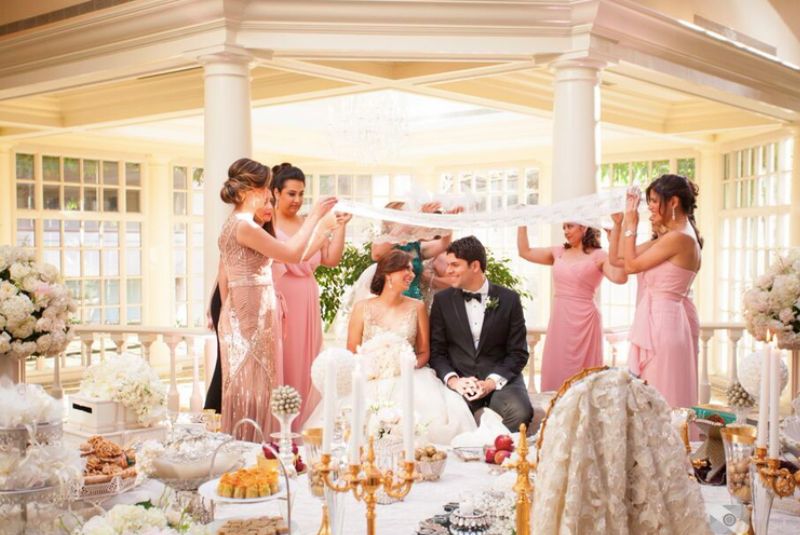
Ceremonies for weddings in Iran have different sections; proposal, Bale Boroon, Hana Bandhan, the wedding day, Pagosha, and honeymoon are happy parts of Iranian culture. They invite a significant number of guests for the wedding day. Depending on the family, the guests' number changes between 150 to even 2000 people.
The main wedding ceremony in Iran is called Aroosi. Families also hold another small ceremony a few months before Aroosi called Aghd.
In Aghd, only friends and family are invited. Aghd is a ceremony of 50-200 people. At this wedding, the couple goes to a register office and officially gets married (or some invite the clergyman over to their place).
Typically after Aghd, the couples can easily go everywhere together but still do not live with each other. Aghd lasts around 3-12 months so that they can prepare the stuff for the house and arrange the wedding. After the Aroosi, they start living with each other.
Religious Customs
Most Iranian people are Muslims. Therefore, many Iranian cultures and customs are Islamic. Religious ceremonies are an essential part of Iranian culture and traditions. In Iran, people celebrate the birth dates of Prophet Mohammad and the main Imams. There are also some Islamic events (such as the Event of Ghadir Khumm, Eide Fitr, etc.). They typically give away free juices and sweets on these dates.
The most important religious tradition in Iran is the mourning of Muharram, the first month of the Islamic calendar in which Imam Hussain was killed in the battle of Karbala.
In the Karbala battle, the army of the second Ummayad caliph Yazid killed Imam Hussein, the grandson of Prophet Muhammad(PBUH). Although there are controversies regarding why Imam Hussain was killed, most Muslims believe that he fought for justice and the Ummayad caliph killed him brutally. That's why Shia Muslims mourn for Imam Hussein every year when the battle of Karbala happened.
The whole month of Moharram, Shia Muslims mourn his death. They dress in black, go to mosques, and beat their chest in some religious street carnivals. People also go to mosques and places to hear clergymen's stories about the instances at Karbala. There are many different rituals in Islamic countries for this mourning, including:
| Read More: What is Zoroastrianism: Iranian' Ancient Religion
Rowzeh

The most common rite in Muharram is Rowzeh or Rawsa. It is a ritual in which Iranians listen to Noha and weep while beating their chests to display their grief for the death of Imam Hussein.
Noha is a sad poem and story about Karbala's events and Imam Hussein's death. While listening to Noha, Shia Muslims weep for Imam Hussein's tragic death as much as they can to display their grief and offer their condolences to his family.
Taziya (Tazieh)
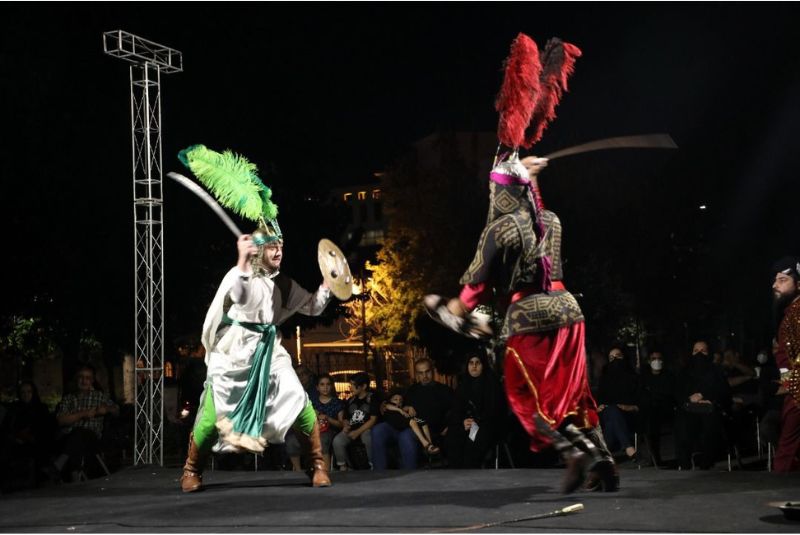
Another ritual people perform in many different ways in different cities and regions in Iran is Taziya. Taziya is a theatrical re-enactment of the events in Karbala's battle, like Imam Hossein's tragic death. People play the role of Imam Hussain and his family and how they were killed.
Traveling to Iran during Muharram and Ashura?
Read "Best Places for Muharram Observances in Iran" to experience the best!
Shabe Ghadr (Shabe Ahya)
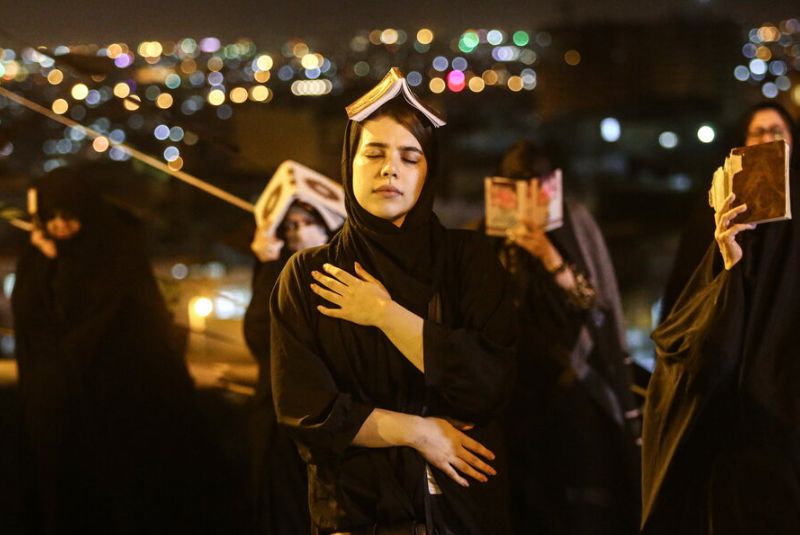
This Iranian spiritual culture, also known as Shabe Barat, Night of Decree, and Night of Value, is when the first verses of the Quran were revealed to the Islamic prophet Muhammad. People believe that on this night, the blessings and mercy of God are abundant, sins are forgiven, supplications are accepted, and the annual decree is revealed to the angels. Angels will then descend to earth, especially the angel Gabriel, referred to as "the Spirit", to perform any errand decreed by God.
Bottom Line
Remember that understanding and appreciating diversity is the key to fostering harmony and connection among people. Embrace the beauty of cultural differences, celebrate the rich tapestry of Iran's heritage, and let your experiences ignite a lifelong passion for exploring and respecting the world's varied customs. May your journey be filled with unforgettable encounters and a deeper appreciation for the shared humanity that unites us all.


Comment
Leave a Comment